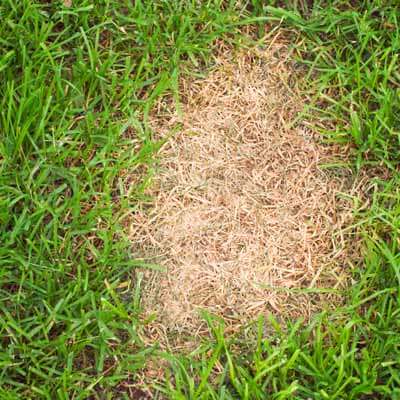
Browning and dead grass can do a number on your curb appeal. Pests and diseases are obvious culprits for dying grass, but there are plenty of other offenders out there as well. It’s important to understand the other main causes for brown or dead patches in your grass in order to treat or prevent these unsightly spots from showing up in your lawn. Though some approaches to dealing with dead grass involve harsh chemicals, there are many other organic alternatives for addressing this issue as well.
- Excess Water: Georgia’s infamous clay soil can cause drainage issues that will result in brown spots throughout your lawn. Sometimes the water buildup occurs underground, killing the turf from below the surface. Other signs are more obvious, with water pooling in certain areas of your yard or lawn.
- Treatment and Prevention: Excess water will continue to result in dead spots no matter how hard you try to make the grass grow. Aeration will certainly help though by allowing the soil to better absorb more moisture. In some minor cases, this may solve the issue altogether, but other situations may require more extensive drainage efforts like installing a French drain to reduce water buildup.
- Pet Urine: Dog’s urine is a top cause of dead grass and brown spots in the Atlanta area. The urine overexposes the soil to nitrogen, which causes the grass to die and in turn, causes brown spots throughout the lawn. Luckily, it is possible for puppies and green grass to live in harmony.
- Treatment and Prevention: Waiting an entire growing season for the grass to replenish itself isn’t ideal. You can reseed the brown spots to speed up the process, but also consider adjusting your pet’s diet. There are several natural options that will reduce the acid content, minimizing brown spots. Definitely consult with your veterinarian before making any major changes to your pup’s diet. You can also train your pup to go potty in certain places of your yard and not on your lawn, trees or shrubs.
- Trampling: Kids and pets can give your lawn a run for its (or your) money. Constant foot traffic can quickly cause your turf to go brown and if left untreated, it will eventually result in bare spots in your lawn. Trampling is so harsh on lawns because it makes it tough for grass to get the three things it needs most to stay healthy: water, sunlight and nutrients. As grass is walked on, blades are pushed over and the soil is compacted, making it harder for the soil to absorb the necessary water and sunlight it needs to survive. In turn, grass will begin to brown and weeds will move in.
- Treatment and Prevention: In an effort to minimize the effects of trampling, enhance your turf’s survival needs. Water regularly and effectively, giving your grass an inch of water weekly. Keep on top of weeds with organic alternatives to herbicides like a citrus-oil based spray. Apply organic fertilizers and aerate the soil annually to reduce compaction.
Brown spots stick out like a sore thumb amidst an otherwise green, healthy lawn. Taking a proactive approach to your lawn care and building up a healthy soil organically will help minimize dead areas or brown spots in your turf and get your lawn back on track to being healthy and happy once again.

